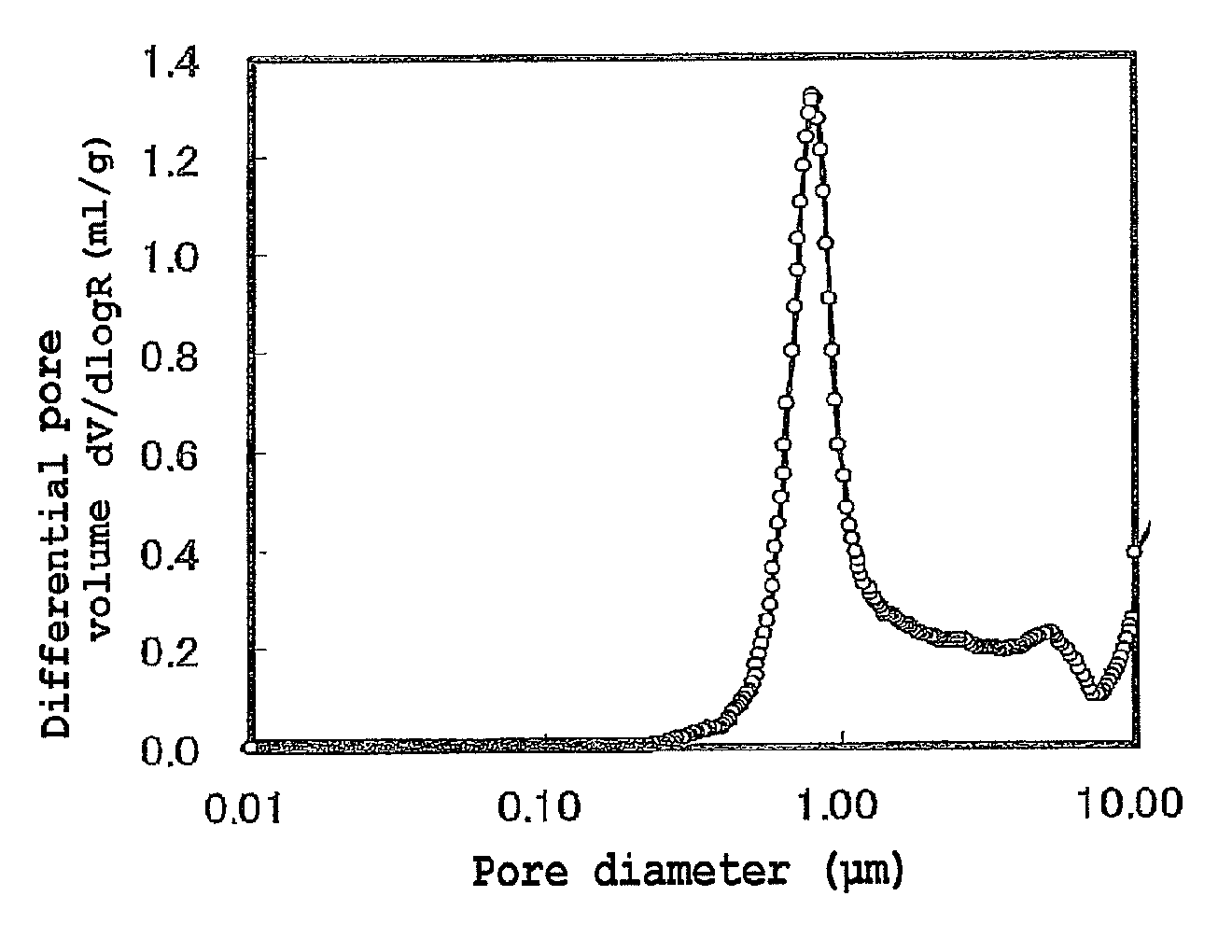Method for producing positive electrode active material for battery
a positive electrode active material and battery technology, applied in the direction of non-metal conductors, cell components, conductors, etc., can solve the problems of difficult to obtain diffusion space sufficient for difficult to stably secure the diffusion space of li ions by mixture and paste of binder, etc., to hinder the insertion/release of li ions and hinder the insertion and desorption of li ions
- Summary
- Abstract
- Description
- Claims
- Application Information
AI Technical Summary
Benefits of technology
Problems solved by technology
Method used
Image
Examples
example 1
Adjustment of Average Particle Diameter of Raw Material for Positive Electrode Active Material
[0086]Aggregated particles (average particle diameter: 3 μm) of lithium manganate, confirmed to have a single phase since the aggregated particles corresponded to JCPDS: No. 35-782 according to X-ray diffraction, were subjected to atomization treatment in a wet mill. In this case, as the wet milling mill, Dyno Mill KDL-PILOT A TYPE (content volume: 1.4 L, manufactured by Shinmaru Enterprises Corporation) was used. 4.28 kg of zirconia beads having a diameter of 0.2 mm was used. A mixture of 300 g of aggregated particles of the lithium manganate and 1700 g of ethanol was milled for 30 minutes under the condition of number of rotations of 1900 rpm while being circulated at a flow velocity of 400 g / min. The average particle diameter of the mixture after milling was 0.5 μm.
(Mixing with Carbon Particles)
[0087]3 g of Ketjenblack EC (produced by Lion Corporation) as carbon particles and 280 g of et...
example 2
[0090]The mixing with carbon particles, the firing of a mixture and the adjustment of the average particle diameter of a positive electrode active material fired body were performed to obtain a porous positive electrode active material fired body using the same conditions as those of Example 1 except for using 3 g of carbon black (#5500 produced by Tokai Carbon Co., Ltd.) as carbon particles in Example 1. Table 1-2 shows results obtained by performing the above-mentioned evaluations using the obtained positive electrode active material fired body. The concentration of the coating paste was 40% by weight, and the viscosity was 5100 cps.
example 3
[0091]The mixing with carbon particles, the firing of a mixture and the adjustment of the average particle diameter were performed to obtain a porous positive electrode active material fired body using the same conditions as those of Example 1 except that the average particle diameter of the positive electrode active material fired body was set to 3 μm by changing the irradiation time of ultrasonic wave to 1 minute when the fired lithium manganate particles were crushed in Example 1. Table 1-2 shows results obtained by performing the above-mentioned evaluations using the obtained positive electrode active material fired body as a positive electrode active material. FIG. 1 shows a graph of a pore distribution of the positive electrode active material fired body of Example 3. As shown in FIG. 1, the positive electrode active material fired body of Example 3 had one peak pore diameter which provided a local maximum differential pore volume in a pore diameter range of 0.01 to 10 μm, and...
PUM
 Login to View More
Login to View More Abstract
Description
Claims
Application Information
 Login to View More
Login to View More - R&D
- Intellectual Property
- Life Sciences
- Materials
- Tech Scout
- Unparalleled Data Quality
- Higher Quality Content
- 60% Fewer Hallucinations
Browse by: Latest US Patents, China's latest patents, Technical Efficacy Thesaurus, Application Domain, Technology Topic, Popular Technical Reports.
© 2025 PatSnap. All rights reserved.Legal|Privacy policy|Modern Slavery Act Transparency Statement|Sitemap|About US| Contact US: help@patsnap.com


